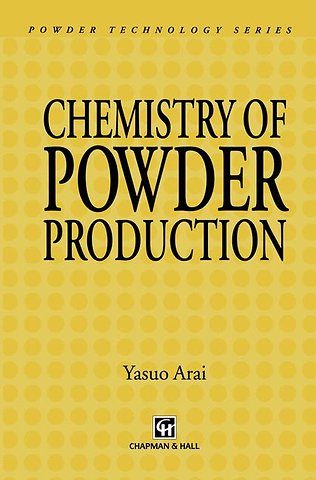1 The concept of a powder.- 2 Specification and control of powder particles.- 2.1 Powdered materials for fine ceramics.- 2.2 Magnetic powders.- 2.3 Pigment powders.- References.- 3 Powder fundamentals.- 3.1 Particle size.- 3.2 Surface energy.- 3.3 Surface structure.- 3.3.1 Surface activity.- 3.3.2 Lattice defects.- 3.4 Surface properties.- 3.4.1 Adsorption.- 3.4.2 Wetting.- 3.4.3 Surface improvement.- 3.4.4 Catalytic action.- 3.4.5 Mechanochemistry.- References.- 4 The preparation of powders.- 4.1 The grinding of solids.- 4.1.1 Mechanisms of grinding.- 4.1.2 Grinding energy.- 4.1.3 The theory and practice of grinding.- 4.2 Thermal decomposition of solids.- 4.3 Deposition of solids from the liquid phase.- 4.3.1 Dissolution and deposition.- 4.3.2 Application of solubility products to precipitation processes.- 4.3.3 Co-precipitation and homogeneous precipitation.- 4.3.4 The formation of crystal nuclei.- 4.3.5 Deposition of precipitated particles.- 4.3.6 The rate of formation of nuclei and the induction time.- 4.3.7 The degree of supersaturation control of the size of precipitated particles.- 4.3.8 The growth of crystals.- 4.3.9 Crystal systems and crystal shape.- 4.3.10 The control of crystal shape and shape modification.- 4.3.11 Application of precipitation reactions to industrial process.- 4.3.12 The hydrolysis of metal alkoxides.- 4.3.13 Hydrothermal reactions.- 4.3.14 The rapid deposition of solids from the liquid state.- 4.4 Vapour-phase reactions.- 4.4.1 The thermodynamics of reacting systems.- 4.4.2 The preparation of oxide powders.- 4.4.3 The preparation of non-oxide powders.- 4.5 Sintering and solid-state reactions.- 4.5.1 Solid-state sintering.- 4.5.2 Solid-state reactions.- References.- 5 Determination of powder characteristics.- 5.1 Shape and size of particles.- 5.1.1 Shape and size of a single particle.- 5.1.2 Size distribution.- 5.1.3 Mean diameter.- 5.2 Methods of particle size measurement.- 5.2.1 Sieving method.- 5.2.2 Microscope method.- 5.2.3 Sedimentation method.- 5.2.4 Adsorption method.- 5.2.5 Permeability method.- 5.2.6 X-ray diffraction method.- 5.3 Measurement of surface properties.- 5.3.1 Surface energy.- 5.3.2 Heat of wetting.- 5.3.3 Heat of adsorption.- 5.3.4 Zeta potential.- 5.3.5 Surface activity.- References.

